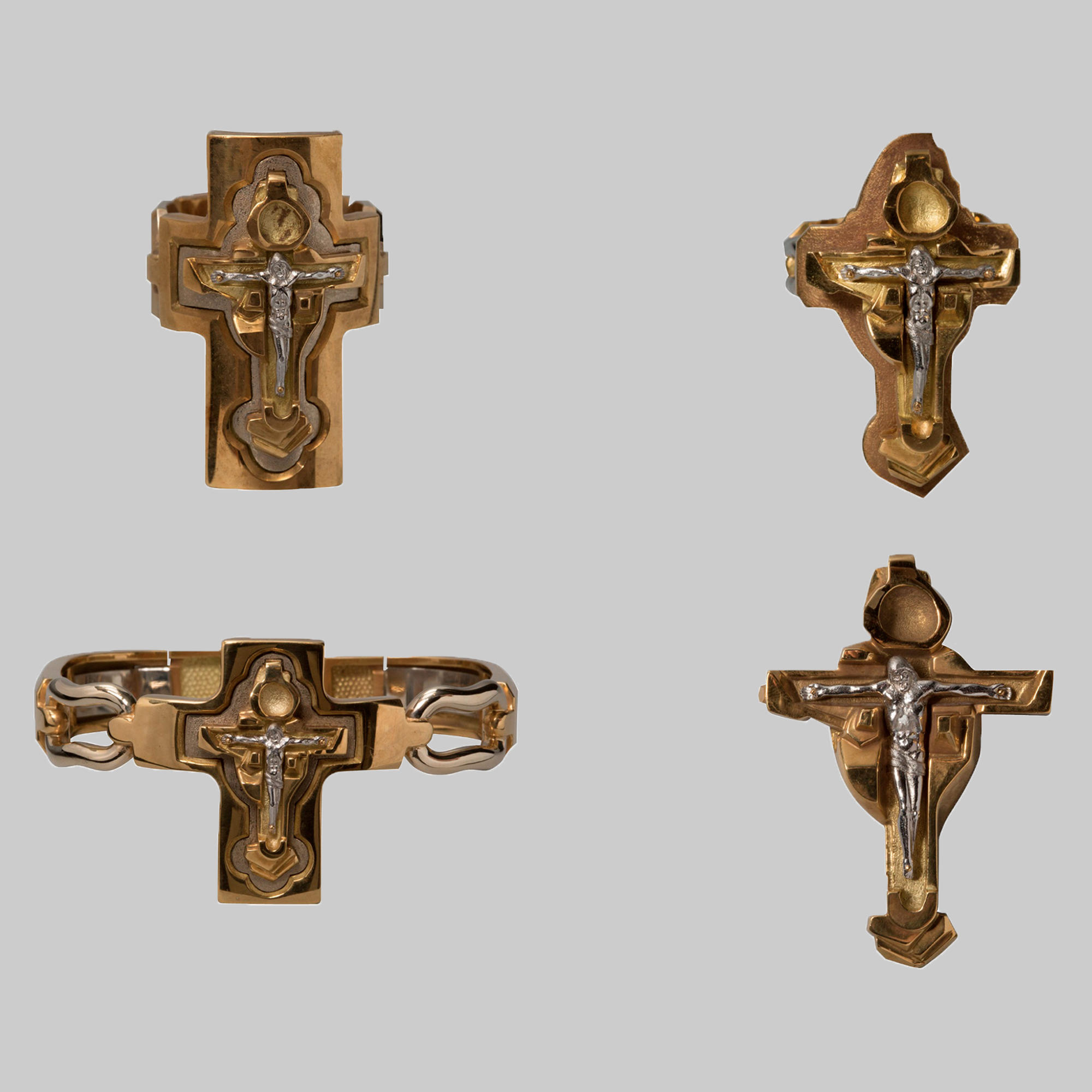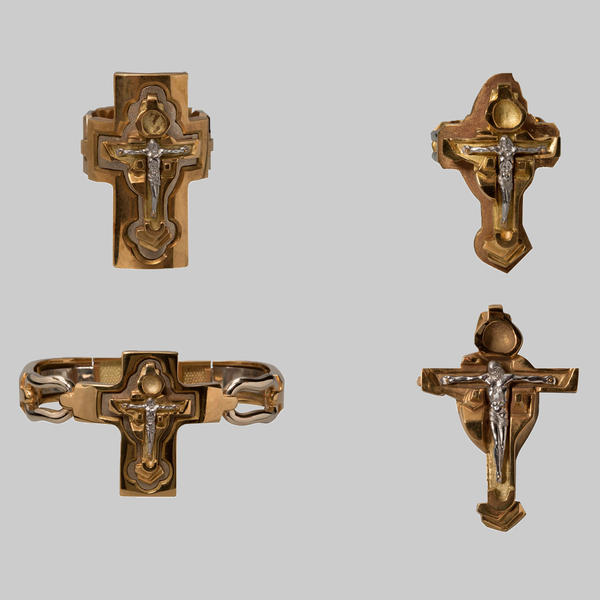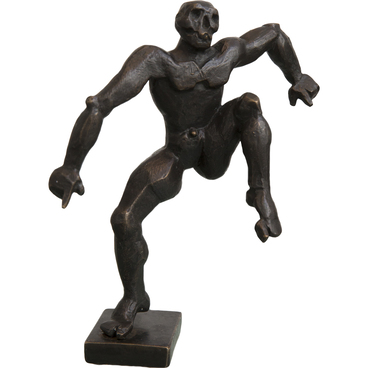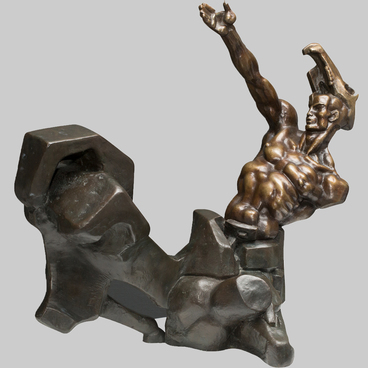On display, there are pieces of jewellery of the Heart of Christ series, designed by Ernst Neizvestny in 2013. The set includes a bracelet, two matching rings, and two cross pendants. All the five articles are made of gold and platinum and united by a subject that was close and emotive to the artist, the crucifix.
In his search of meaning and truth, Ernst Neizvestny always returned to the crucifix and reproduced the cross, again and again, in his sculptural and graphic works and later in pictures. Neizvestny came to think about jewellery design in the middle of the 1990’s when he started co-operating with Felix Komarov, he founder of the Russky Mir gallery. The Heart of Christ, a bronze sculpture made by Neizvestny in the late 1970’s for Pope John Paul II, was selected as the basis for a series consisting of exclusive and very expensive jewellery.
The Heart of Christ is referred to as a gem in the Vatican collection. It is an unusual sculpture, the artist’s amalgam of the canonical vision of the crucifix in the form of a cross and its emotional perception in the form of a dissected human heart enveloping the sufferer’s figure. The heart vessels go up, making something similar to a tree crown and referring the viewer to the Tree of Life, another prominent project by Ernst Neizvestny.
The sculptor recalled that the crucifix was ordered by Polish Catholics for Cardinal Wojtyla when he was working on a monument to Khrushchev. The result was a most realistic sculpture which he was never allowed to complete and pass to the client. In May 1981, during an attempted murder, the Pope of Rome was wounded by a shot in the belly. When he recovered, John Paul II remembered the old order and made up his mind to buy the work from the sculptor, but Ernst Neizvestny gave him the crucifix as a gift and got the Pope’s blessing in return.
In his search of meaning and truth, Ernst Neizvestny always returned to the crucifix and reproduced the cross, again and again, in his sculptural and graphic works and later in pictures. Neizvestny came to think about jewellery design in the middle of the 1990’s when he started co-operating with Felix Komarov, he founder of the Russky Mir gallery. The Heart of Christ, a bronze sculpture made by Neizvestny in the late 1970’s for Pope John Paul II, was selected as the basis for a series consisting of exclusive and very expensive jewellery.
The Heart of Christ is referred to as a gem in the Vatican collection. It is an unusual sculpture, the artist’s amalgam of the canonical vision of the crucifix in the form of a cross and its emotional perception in the form of a dissected human heart enveloping the sufferer’s figure. The heart vessels go up, making something similar to a tree crown and referring the viewer to the Tree of Life, another prominent project by Ernst Neizvestny.
The sculptor recalled that the crucifix was ordered by Polish Catholics for Cardinal Wojtyla when he was working on a monument to Khrushchev. The result was a most realistic sculpture which he was never allowed to complete and pass to the client. In May 1981, during an attempted murder, the Pope of Rome was wounded by a shot in the belly. When he recovered, John Paul II remembered the old order and made up his mind to buy the work from the sculptor, but Ernst Neizvestny gave him the crucifix as a gift and got the Pope’s blessing in return.
Meditation pushed Neizvestny to perceive the crucifix not only as a universal human symbol of Christianity, but also as a metaphysical concept embracing, as a single whole, essentially and effectively opposite things: the good and the bad, death and life, happiness and suffering. Endure torments for the sake of humanity, drink the cup full of sufferings, send forth a cry of pain, and then celebrate the Man-God’s victory — this is precisely what the crucifix means to Ernst Neizvestny.



